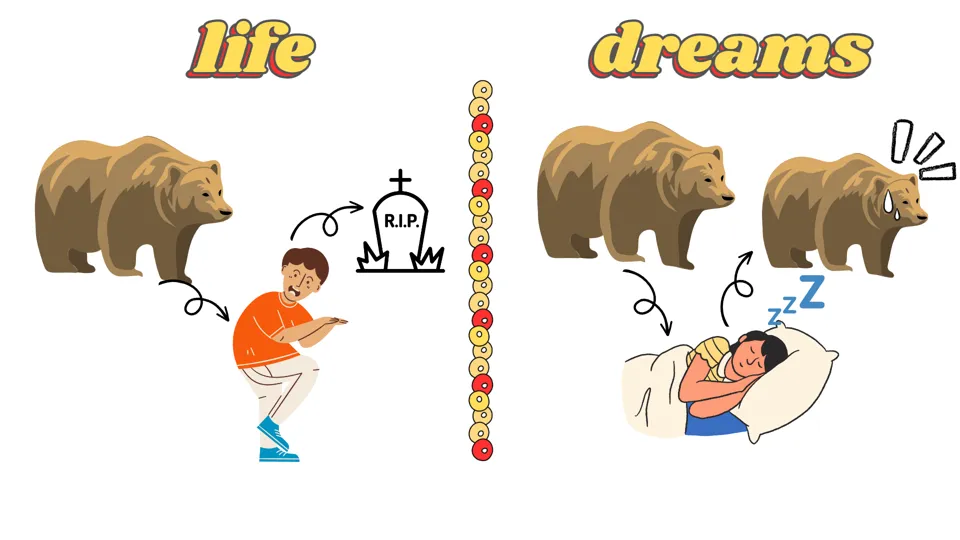By Prathamesh Kapse | 29th May, 2023
Discover the incredible world of lucid dreaming and learn how to take control of your dreams. Explore the science behind lucid dreams, understand why they occur, and uncover effective techniques to experience this phenomenon. Unlock the potential of your subconscious mind and embark on a journey of self-discovery through the realm of lucid dreaming.

Dreams are almost never in our control. We can’t voluntarily move through a dream. Taking control of your dreams is quite a challenging task; Lucid Dreaming is the name. It’s a phenomenon where you become aware that you’re in the dream state while you’re experiencing it.

This awareness allows you to have some control over your dreams allowing you to manipulate what happens in the dream. If you listen to other people’s experiences, there comes a point where you doubt the reality of lucid dreaming, such also happened with me too. However much of a sham it may seem, Lucid Dreaming is real. There are scientific studies proving the phenomenon. In this article, we’ll discuss briefly what lucid dreaming is, why it happens, and how we can achieve as well as practice lucid dreaming.
What Is Lucid Dreaming?

As discussed above, Lucid Dreaming is a phenomenon where the dreamer becomes aware that they’re dreaming. This allows them to have a certain control over their consciousness in their dreams. The dreamer can touch, feel, move, talk, and do a lot of other things voluntarily that wouldn’t be possible in a normal dream.
The interesting thing about this is that apart from just being able to perform actions such as in real life, we’re also able to do perform superhuman feats. That’s because, essentially, one is transported to inside their own imaginative world. The laws of reality aren’t necessarily followed there. You can fly, teleport, change the settings of the dream, perhaps study with Albert Einstein, or even communicate with your own subconscious mind, among doing a lot of other things. These aren’t just random things you can do; these are all a brief compilation of the descriptions from people who have actually experienced this in their dreams and navigated themselves.
However, not everyone in the world has the ability to lucid dream naturally. Only about 20-30% of the world’s population are natural lucid dreamers. Others, meanwhile, can master the skill. Yes, Lucid Dreaming is a skill that can be learnt, and we’ll shortly see how. But before learning how to perform anything, we need to have an understanding about how it works.
The Science Behind It.

Lucid dreams occur at exactly the same time as dreams occur. In simple terms, they’re occupy the same phase within the sleep cycle i.e. REM sleep. In the first part of the sleep month (If you’re new, this is the last article of a four-article series on Sleep), we discussed the various stages of sleep. For the sake of recalling, they were…
1. N-REM sleep: Non-Rapid Eye Movement.
2. REM sleep: Rapid Eye Movement.
Dreams are a part of REM sleep. Brain activity is reduced to a certain amount during sleep. All parts of the brain aren’t active, which includes the frontal cortex. This brings us to the first explanation.
1. Activation of the frontal cortex: The frontal cortex is a part of our brain responsible for decision-making, self-awareness, and impulse control. When we’re asleep, if there’s a heightened activity of the frontal cortex, we become aware of ourselves and realize we are dreaming.
2. Increased self-reflection: Lucid dreaming may occur due to an increased sense of self-reflection and self-awareness during sleep. This theory suggests that certain regions of the brain responsible for self-awareness and introspection may become activated during REM sleep, the stage of sleep associated with dreaming. Kind of like the first theory.
3. Sleep Stage Discrepancy: During sleep, the parts that are responsible for dreams are active while the parts that are responsible for self-awareness are inactive. However, when sometimes both these parts become active, it results in the occurrence of lucid dreams.
This was about how we experience lucid dreams. Let’s move on to Why.
Why Do We Become Lucid In A Dream?

In earlier times, i.e. stone age, humans would have encountered a lot more danger than present-day humans. As being in a situation like facing a grizzly bear, a lion, or a tiger would be much deadlier in real life, the brain would simulate these scenarios in our minds, to prepare us when the actual moment arrives. These are what we now call nightmares.
Dreams, therefore, can be seen as a system implemented by the brain to prepare us for moments of danger/insecurity. Nowadays,
Dreams, therefore, are a system implemented by the brain to simulate dangers for us. These are what we call nightmares. The same can be assumed/ thought about dreams. Dreams as in happy ones. The ones where we are facing joyful and happy situations.

This is just one theory. As with all other phenomena, there, obviously, are more than one theory about why we dream or why we become lucid in a dream.
The question now is, if lucid dreaming is a learnable skill, how can we do it?
How Can We Become Lucid In A Dream?

Lucid Dreaming is simple in theory. You just have to prepare your mind to tell itself that it’s dreaming. Prepare yourself so that you keep checking if you are dreaming or not. The methods go like this:
1. Reality-Check: Keep asking yourself throughout the day, “Am I dreaming?”. This will make the question firm inside your brain. While sleeping, when the brain will recall all the information gathered throughout the day, the question will occur and so you answer YES! It’s actually not that easy though.
2. Wake-Back-to-Bed (WBTB): Set an alarm to wake up after around 4-6 hours of sleep. Stay awake for a short period, around 20-30 minutes, engaging in activities related to lucid dreaming, such as reading about it or practicing meditation. Then, go back to sleep with the intention of having a lucid dream. This technique capitalizes on the increased likelihood of entering REM sleep, the stage associated with vivid dreaming.
3. Dream Journal: Maintain a record of all the dreams you get. As soon as you wake up after having a dream, write down everything that you remember from that dream. This will establish, in your subconscious, the idea that dreams are more important than you previously thought. The mind then pays more attention to dreams and is able to distinguish between dreams and reality. Not entirely, but some of the details.
4. MILD Technique: Mnemonic Induction of Lucid Dreams (MILD) involves setting an intention to remember that you are dreaming as you fall asleep. Repeat a phrase like "I will be aware that I'm dreaming" in your mind while visualizing yourself becoming lucid in a dream. This helps program your subconscious mind and reinforce the desire for lucidity.
I would suggest you try these methods first and then dig into more methods as you progress. Achieving lucid dreams requires patience. You can’t expect these methods to work as soon as you implement them. Everything worth having takes time. Consistency, Patience, and Positivity are key here. It’s also important to maintain a proper sleep schedule. For more information about a proper sleep schedule, read the second article from The Sleep Month.
This is the fourth and last article from a series of articles about Sleep for the month of May. Check out the previous articles of this series: First Article, Second Article, Third Article.
Thumbnail Design by Mudit Jha






FIND US ON: